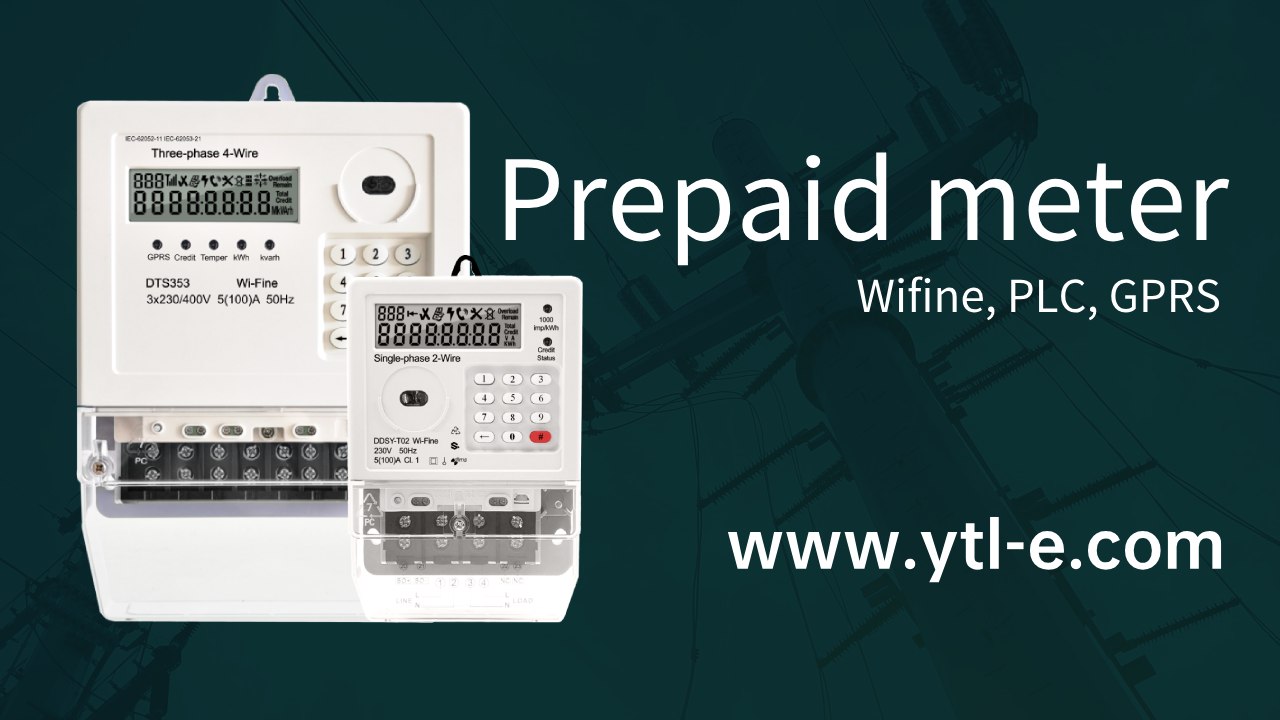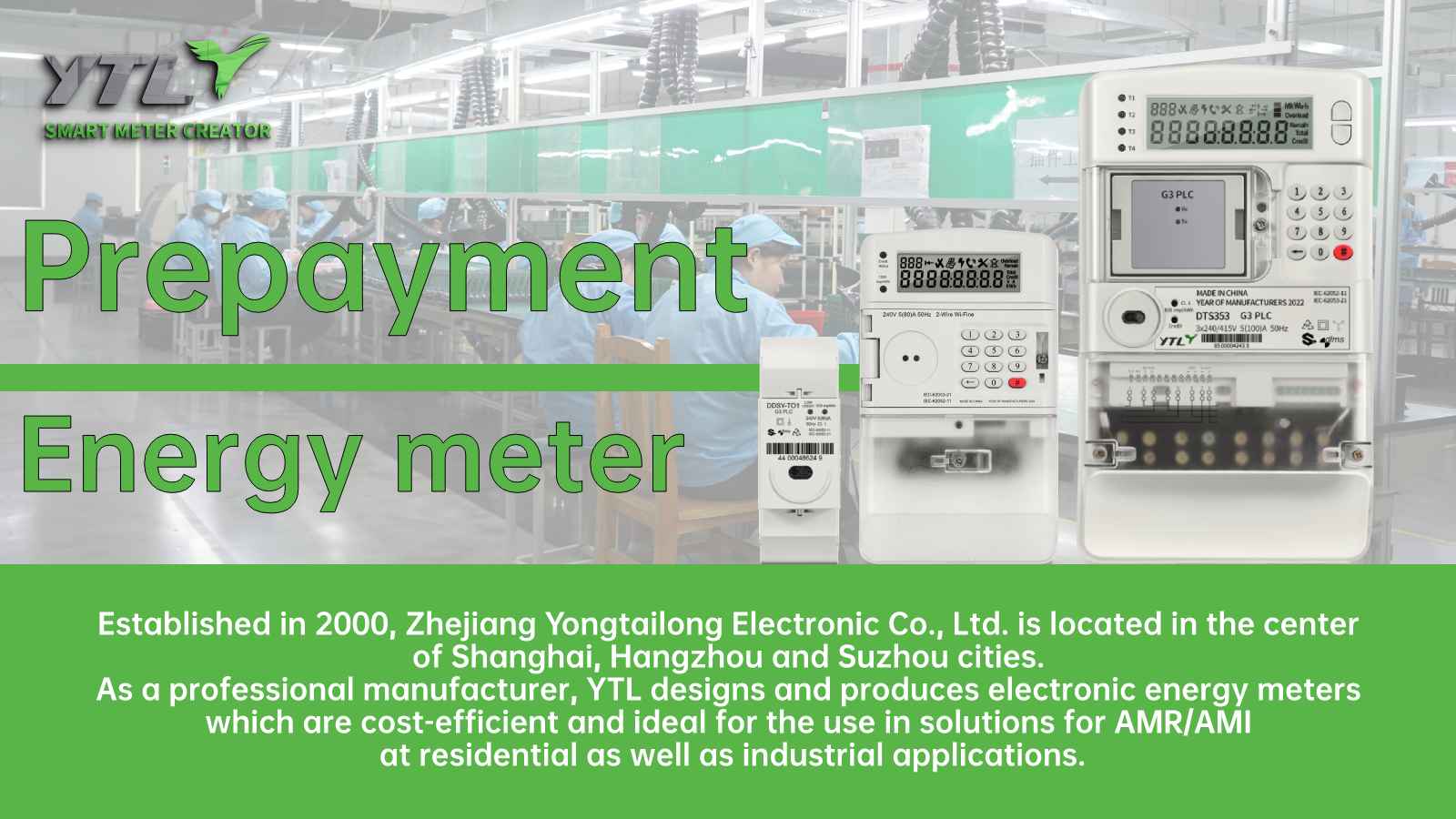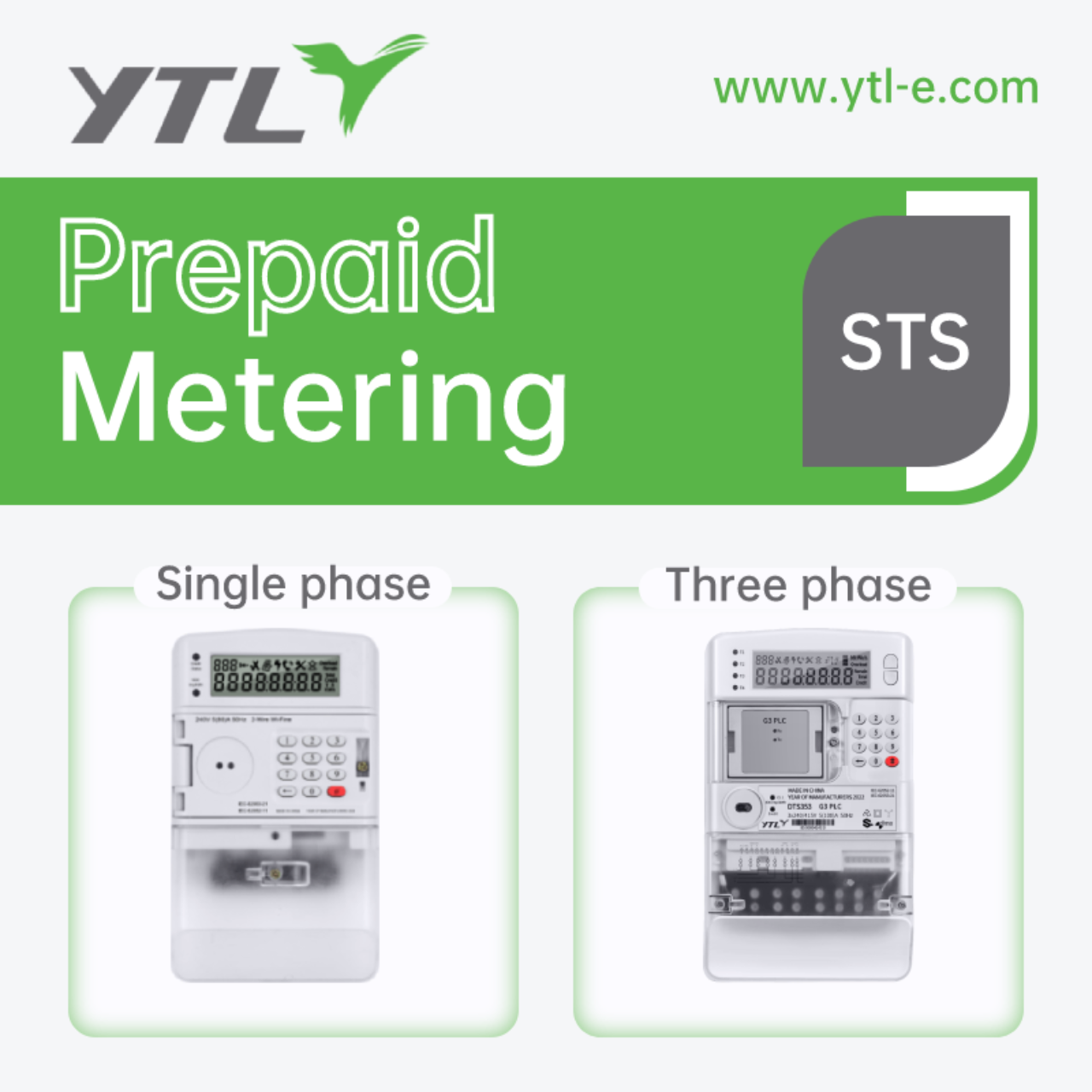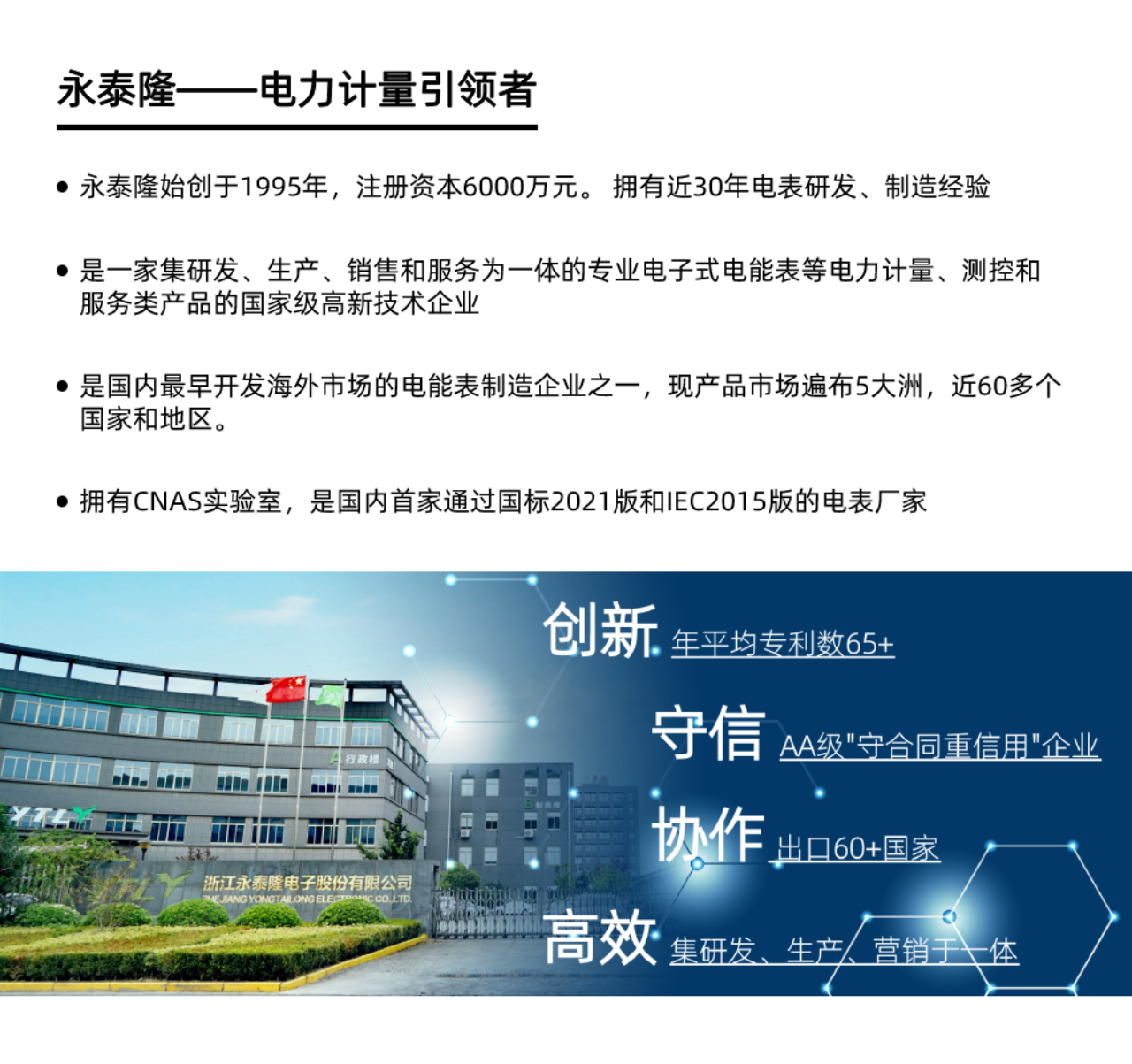In the field of industrial and commercial energy management, the efficiency of electricity cost recovery and the control of electricity consumption costs have always been the core pain points for enterprise operations. Under the traditional postpaid model, manual meter reading, bill verification, and debt collection not only consume a lot of manpower, but also pose a risk of fund flow interruption due to information lag. The intelligent evolution of prepaid meters is providing efficient solutions for commercial complexes, industrial parks, long-term rental apartments, and other scenarios through a closed-loop management model of "pay first, use later", becoming a key infrastructure for the digital transformation of modern energy systems.

Technological Evolution: The Leap from Mechanical Watches to Intelligent Terminals
The technical core of prepaid electricity meters has evolved from the early IC card plug-in metering to an intelligent terminal integrating the Internet of Things, edge computing and encrypted communication. Its core competencies are reflected in three dimensions:
1. Bidirectional real-time communication: Through 4G, LoRaWAN, or NB IoT networks, electricity meters can upload real-time electricity consumption data and receive control instructions, enabling remote power interruption, rate adjustment, and fault diagnosis.
2. Multimodal payment integration: supports IC cards NFC、 Multiple recharge methods such as mobile payment (Alipay/WeChat/Stripe) are compatible with offline overdraft and online instant settlement, ensuring service continuity in network environments.
3. Anti electricity theft and safety protection: Using magnetic interference detection, current vector analysis, and zero break monitoring technology, common electricity theft methods such as diversion and reverse connection can be identified, with an error control accuracy of 0.2S level (IEC 62053-22 standard).
This type of technological upgrade has enabled prepaid electricity meters to surpass basic metering functions and evolve into energy data hubs. For example, three-phase prepaid electricity meters can synchronously monitor power quality parameters such as harmonic distortion rate and power factor, providing a basis for optimizing power consumption decisions for industrial and commercial users.

Application scenario: Accurately matching industry needs
Commercial Complex: Multi format Energy Management
In the mixed format of retail, catering, and office, prepaid electricity meter systems achieve refined management through household metering and differentiated billing strategies
Tenant grading control: Set independent current thresholds for catering merchants, automatically cut off power when exceeding limits to prevent abuse of high-power equipment;
Public energy consumption allocation: Allocate the electricity consumption of public facilities such as central air conditioning and lighting to each merchant according to their area or revenue ratio, and generate transparent bills based on time of use electricity prices;
Emergency credit limit: Provide temporary overdraft privileges for major merchants to avoid sudden power outages affecting business continuity.
Industrial Park: Compliance of Power Supply Conversion
In the face of chaos such as private equipment connection and electricity theft by enterprises in the park, the value of prepaid electricity meters lies in:
Demand control: Set a monthly demand threshold based on the electricity consumption characteristics of the enterprise, and automatically trigger tiered electricity prices when exceeding the limit to avoid penalties for grid capacity electricity bills;
Load safety warning: Real time monitoring of transformer load rate, cutting off secondary circuits according to preset priority when approaching critical values to prevent overload tripping;
Multi level permission management: supports hierarchical data views of group headquarters park enterprise, balancing centralized monitoring and independent accounting needs.
Long term rental apartments and public services
For decentralized leasing scenarios, the system enables tenants to self pay, inquire about electricity usage, and report anomalies through mobile devices. The property management side can remotely set prepayment amounts and subsidy policies in bulk, reducing management costs by more than 70%. In public institutions such as schools and hospitals, the prepaid model effectively eliminates the risk of illegal use of electrical appliances in dormitories and downtime due to medical equipment arrears.
Core Advantage: Refactoring the Energy Value Chain
Cash flow security guarantee
The prepaid mechanism compresses the electricity fee recovery cycle from the traditional 30-60 days to real-time payment, completely eliminating the risk of bad debts. The practice of a certain chain supermarket shows that after the system goes online, the electricity fee recovery rate increases from 89% to 100%, and the annual capital turnover rate increases by 2.3 times.
Exponential improvement in operation and maintenance efficiency
Centralized monitoring of a million level electricity meter cluster is achieved through a cloud platform, which automatically generates energy consumption analysis reports, equipment health assessments, and maintenance work orders, reducing manpower investment by 80%. Edge computing capability can also perform fault diagnosis locally, such as identifying abnormal sealing of electricity meters and automatically locking accounts.
Compliance and Sustainable Development
Meet data security standards such as GDPR and PCI DSS, encrypt and store user payment information and electricity usage data. At the same time, by using electricity consumption data to infer carbon emissions, it provides a reliable basis for corporate ESG reporting.

Future Trends: From Independent Devices to Energy Ecological Entrances
With the deepening of energy Internet, prepaid meters are evolving from independent metering equipment to system level solutions:
Dynamic electricity price response: docking with electricity spot market data, automatically switching pricing strategies to utilize low-priced periods for charging and energy storage;
Virtual Power Plant (VPP) Participation: Aggregate adjustable loads from industrial and commercial users, and obtain grid compensation benefits through demand response;
Carbon footprint tracking: Built in carbon emission factor database, real-time calculation of carbon emissions corresponding to electricity consumption and generation of emission reduction recommendations.
At the technical standard level, IEC 62056-7-3:2023 has added interoperability specifications for prepaid electricity meters and energy management systems, supporting seamless integration of third-party devices such as photovoltaics and energy storage through the DLMS/COSEM protocol.
conclusion
The evolution history of prepaid electricity meters is essentially a microcosm of the transition from extensive to intelligent energy management in industry and commerce. When the "pay first" model is deeply integrated with the Internet of Things and big data technology, its value has far exceeded that of the electricity fee recovery tool itself, and has become the core pivot for enterprises to optimize their energy consumption structure, participate in the energy market, and practice low-carbon transformation. For industrial and commercial users, deploying intelligent prepaid systems not only means reducing operating costs, but also a strategic choice to seize the opportunity in the wave of energy revolution. In the future where electricity price fluctuations intensify and regulation becomes stricter, this technology will become a key guarantee for enterprise energy resilience.


 English
English 简体中文
简体中文


.png?imageView2/2/w/500/h/500/format/png/q/100)










